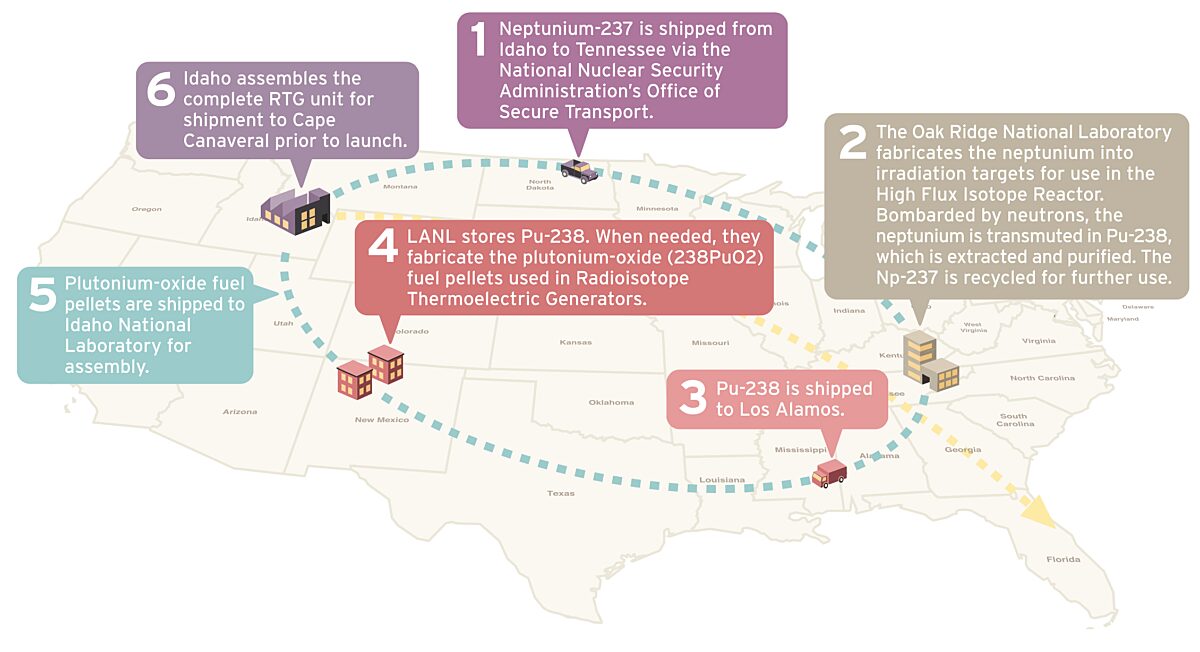Casey Dreier • Oct 29, 2013
Power From the Isotopes
This feature was originally published in the September 2013 Equinox issue of The Planetary Report magazine, and only available for current members of the Planetary Society. The following is a brief sample. You can read the full article here.
When Curiosity roared into space in 2011, it carried with it a material so potent that the President of the United States had to approve the launch. This material, plutonium-238 (Pu-238), is used to generate power from a process of radioactive decay, and though it has been essential to nearly 30 missions in NASA's history, its future is in doubt. The United States hasn't generated Pu-238 since 1988. Existing supplies are nearly exhausted.
But after years of effort by hundreds of individuals throughout the government, the United States is on the cusp of producing Pu-238 again. It's a complex, expansive program requiring intricate coordination among multiple federal agencies, Congress, and the White House. It nearly did not survive its early political and budgetary battles. And though challenges lie ahead, NASA has quietly achieved its most important policy victory in decades.

PLUTONIUM-238
Secure facilities within Los Alamos National Laboratory, in Los Alamos, New Mexico, store the country's remaining supply of Pu-238. Exact amounts are not made public, but it's likely less than 30 kilograms (66 lbs.). These final, precious kilograms can only support a dwindling number of missions. NASA now faces a shortage so crippling that vast areas of our solar system will become inaccessible unless more plutonium is created soon...
Click here to continue reading this article. You must be logged in and a member of the Planetary Society. If you are not a member of the Planetary Society, you can join instantly here. If you are a member and have problems accessing the article please contact us at [email protected].
Support our core enterprises
Your support powers our mission to explore worlds, find life, and defend Earth. You make all the difference when you make a gift. Give today!
Donate

 Explore Worlds
Explore Worlds Find Life
Find Life Defend Earth
Defend Earth

